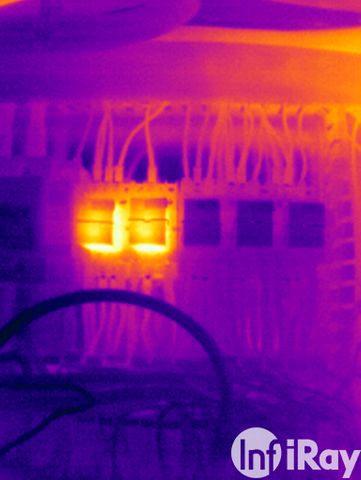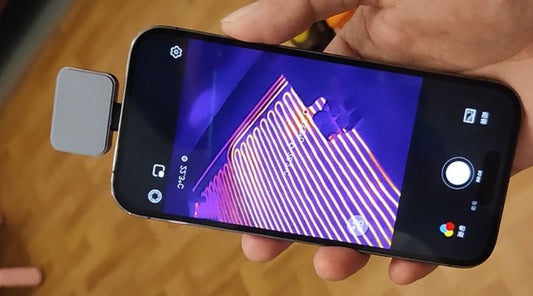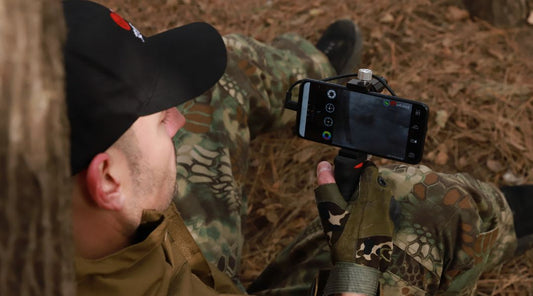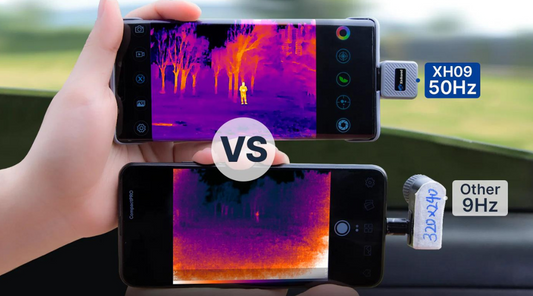How Can Thermal Cameras Help Engineers Improve Work Efficiency in the Electronic Industry?
Thermal cameras are often thought to be only useful for night vision, but their ability to capture heat makes them highly effective in temperature measurement applications as well. In the electronic industry, using thermal cameras properly can not only help engineers and technicians gain a better understanding of the temperature distribution and thermal performance of electronic devices for design and management optimization but also enhance production processes.
- Fault diagnosis. Thermal cameras can help electronic engineers detect faults in circuit boards or other electronic devices. Since faults typically cause local temperature anomalies, thermal cameras can be used to quickly detect faults, thus improving maintenance efficiency and accuracy. For example, they can detect hot spots, heat losses, or insufficient heat dissipation in circuit boards, semiconductor devices, or electronic devices, thereby facilitating the prompt discovery and resolution of issues.
-
Product quality control. Thermal cameras can be employed for product quality control, enabling engineers to inspect product quality on the electronic product assembly line. By detecting anomalies such as hot spots, cold spots, or thermal runaway areas in products, engineers can detect problems early and implement appropriate measures. Thermal cameras such as theXinfrared P2 Pro and T2S Plus offer point, line, and area temperature measurement capabilities. InfiRay's self-developed computer-side information processing software streamlines practical applications.

- Electronic product design. Thermal cameras can help electronic engineers design more efficient electronic products. For example, thermal cameras can be used to measure the temperature distribution of electronic devices. This assists engineers in optimizing circuit layouts, improving heat dissipation efficiency.
- Safety inspection. Thermal cameras can be used to check the security of electronic devices. For instance, by detecting the temperature distribution of batteries, thermal cameras can reveal whether they are overheating, helping to prevent safety incidents such as battery explosions and fires.
- Thermal management. Thermal cameras can assist engineers in optimizing the thermal management of electronic devices. By using thermal cameras to detect the temperature distribution of electronic devices, engineers can better understand the heat flow between heat sources and heat sinks, thereby optimizing the layout and parameters of heat sinks.
- Design verification. Thermal cameras can also be used to validate the design of electronic devices. For example, by using them to detect the temperature distribution of electronic devices during prototype testing, engineers can assess the thermal performance and heat dissipation of electronic devices.
-
Environmental monitoring. Thermal cameras can be used for environmental monitoring. For example, by detecting the ambient temperature around electronic devices in environments like server rooms or telecom base stations, they can be used to evaluate the heat dissipation of air conditioning, the internal temperature of cabinets, and the isolation of hot and cold channels.

-
Energy management. Thermal cameras can be used for energy management of electronic devices. For example, by detecting the distribution of energy consumption in data centers or factories, they can be used to assess the effectiveness of energy conservation schemes.
The non-contact temperature measurement advantages of thermal cameras not only enhance the efficiency of electronic engineers but also reduce the risk of electrical shock, improving the work safety for engineers. Whether you are already using thermal cameras or preparing to use them for the first time, we welcome you to share any additional application scenarios you have discovered in practice.




